Wild Bird Population - Reducing Numbers
International Animal Rescue Foundation has been watching over the past twenty years the decline of European wild birds that is startling our own ornithologists and others plus environmentalists that have seen many species drift away without any real documentation carried out on to this vast but worrying decline in wild bird species.
Studies and documentation by ourselves has been slim however we have been monitoring as well as using public data records to view the worrying drop in species. Main land United Kingdom is a number one country that is seeing such a drop in numbers from the Sparrow (Passer domesticus), House Martin (Delichon urbica), and Starling (Sturnus vulgaris), to Robin (Erithacus rubecula) and Thrush (Turdus philomelos) of which one just does not see in vast numbers like we used to twenty years ago.
The (R.S.P.B) Royal Society for the Protection of Birds has been carrying out extensive research and documentation of the United Kingdom wild bird population of which do fantastic work that we support fully as well as funding.
The Sparrow (Passer domesticus) was once such a common seen bird all over the United Kingdom and other British Isles of which would be seen in such colossal numbers, waking in the morning one would hear the beauty and elegant, choral, and melodic chirping of such a splendid species of bird. I can remember as a small child throwing bread out on to the grass and then viewing a feeding frenzy with Sparrows flocking to the lawn like a scene from the 1963 Alfred Hitchcock film “the birds” (please do not do this at home as it can harm them as it can harm their digestive system thus killing them).
There have been many reasons suggested about the decline in Passer domesticus, they range from the following listed below.
- Agricultural changes to meet with European Union laws.
- Reduced sowing of seeds, such as grass one of the Sparrows favourite foods, it has been stated that due to the increase in population and trend the consumer does not want to wait for such plush lawns to grow in their new home garden but more have “turf” laid.
- Reduced spillage of agricultural seeds and crops – which is again another favourite of the Sparrow that would see them flocking around the farmers tractors feeding of the seeds. However again as of European Union rules and regulations then this type of waste has been tightened thus no seeds for the birds to feed upon.
- Herbicides, Pesticides, Fungicides, and Insecticides are again another major factor that has seen the numbers of Sparrows drop, with their being more stringent farming control methods then these prized insects that the birds would normally feed off are vanishing thus killing of the food supply of the sparrow.
- Genetically Modified Crops saw a massive hit on crops that where first used from around early 1995 the United Kingdom. With their being such a rise inn the number of pest “resistant” crops this then means that there is a decline in the aphid world of pests and diseases of which the Sparrow has to feed on. So take away the seeds and pests and diseases of which the in Passer domesticus would feed on then this would be a significant and monumental factor in their decline to date.
- East England (Anglia, Norfolk, Cambridge, Suffolk, Norwich, Diss, Yarmouth, Attelborough have all seen the largest drop of Sparrows due to new homes being built that again have to meet European Union standards. Homes that were built from the 1920’s that carried on from the 1940’s have mostly been torn down in these areas that had sufficient and adequate loft and roof space under the tiles that Sparrow would nest in with its young. However as most of these ex-world war homes have now been demolished along with large swathes of habitual land including trees, and hedge-land then this to has also seen the Sparrows home destroyed to virtually now being wiped out.
Factors that do not necessarily include human harm but have been pin-pointed to human interference as of the above are below,
- Increased predators of Magpies, Sparrow Hawks to the lack of neutralizing of the common Feline cat that has seen an increase in number thus decreasing the numbers of the common Sparrow.
- Competition for food from other species such as the Pigeon, Gulls and Black Birds (Another species that is also on the decline that will be mentioned on later in this document at a later date once full up-to date research has been carried out).
- Spill over from farmland decline, believe it or not but the United Kingdom government are paying again like they did in the 1990’s to allow their fields to grow fallow (wild) as of the high amount of crops being produced of which was seeing and is again seeing high waste. So why does the United Kingdom if this is again another true factor see high food prices for yet again this year and last?.
- Disease is another factor although not fully known this is something that International Animal Rescue Foundation will go in to in full and great depth analysing all data to see exactly what can be done to alter this.
- Increased traffic is again the other factor. More and more runways along with roads are being built-in the United Kingdom to keep up with modifications and over population thus ripping up more fields, grass and green belt land, along with the Sparrows natural habitual areas.
The decline though in the Sparrow is not all doom and gloom in other regions though although in many parts of the United Kingdom that are mostly within farming communities that have housing sprawled around them then the decline of the Sparrow has been tremendous of which we are not sadly going to see this song bird come back and yet again another species of wild English bird that flocked the United Kingdom skies wiped of the face of the planet. Inadequate building control, over population, introduced (GMO) foods thanks to the John Innes Centre and Monsanto have all been the number one and beneficiary wildlife slaughterers in this area. (Thanks you SELFISH BASTARDS).
The House Sparrow was added to the Red Data list of bird species of conservation concern because the decline had been more than 50% in the last 25 years. Between 1977 and 2000, House Sparrow numbers in the UK have declined by 65%. The Garden Bird Feeding Survey (run by the British Trust for Ornithology) data has shown that the House Sparrow population has declined by some 58% since 1970 in gardens during winter, of which suburban gardens have shown a greater decline (60%) than rural gardens (48%).
More information on Passer domesticus can be found here http://www.housesparrow.org/reproductive_success_of_house_sparrows_along_an_urban_gradient.pdf
It is upsetting to know that we as a human race are killing animals that populated our earth as of negligence and fighting to stay alive. We are the number one destructors and nothing is being done to stop it.
Hear the House Martins song here and view more information - http://www.rspb.org.uk/wildlife/birdguide/name/h/housemartin/index.aspx
The House Martin (Delichon urbica) the common House Martin as one knows them I do believe is one of the most stunning wild birds that one could see. It may not be the most attractive to some but being an avid bird lover, as a child I used to watch them building their nests of which they flew from and to gracefully. The House Martin is a migratory bird that breeds in Europe, Africa and “some locations” of South East Asia of which “we believe has originated from”. Mostly feeding on Insects in Europe but more in the hotter lands of the Sub Saharan where insects are plentifully eaten via airborne flight of this magnificent bird.
Unlike the Sparrow it is not on the Red Watch of endangered birds and is not native to the United Kingdom to. It builds its nests using leaves and pellets which stay glued to the underside of roofs and buildings that can hold in between 3-4 eggs from mother.
Abstract from Wikipedia;
“It is hunted by the Eurasian Hobby (Falco subbuteo), and like other birds is affected by internal parasites and external fleas and mites, but its large range and population mean that it is not threatened globally.Its proximity to man is generally accepted leading to some cultural and literary references”
In 2008 the Daily Mail reported on an ever-increasing trend of yet again habitual destruction that the (R.S.P.B) document on to. 2008 saw a survey carried out that showed just back then a dramatic decrease in the numbers by up to a massive 20%. A small factor of this decrease was the migration back to the United Kingdom but the most worrying of all that was documented on was the fact home owners where deliberately destroying the House Martin (Delichon urbica) nest as their droppings where landing on the cars, pathways to gardens causing some minor damage.
This is an ILLEGAL act, of which International Animal Rescue Foundation, and other unit of animal rescue, welfare to ornithologists will not take lightly and that could leave you the member of the public in a spot of bother with the law facing up to a £5,000 fine to six months if convicted (although rare) in prison.
The common habitat of the House Martin is of low pasture, vegetation and meadows of which there are a number of aphids to airborne insects that they feed off. However yet again habitual loss, over population, traffic and increased pollution are pushing these majestic birds in to decline.
Factors associated with decline are as follows and do not dither much from that of the almost extinct House Sparrow;
- Predator attack from the - Hobby (Falco subbuteo), Pic below bullet transcript
- (GMC) Genetically Modified Crops that again are reducing the number of insects that would normally attack a plant therefore moving them on via displacement or just killing of another species of insect which is in fact the House Martins food.
- House Martins also have parasites that are only acquainted with them. Fleas and mites, including the “House Martin Flea”, Ceratophyllus hirundinis, and internally by endoparasites such as Haemoproteus prognei (avian malaria), which are transmitted by blood-sucking insects including mosquitoes. “A Polish study showed that nests typically contained more than 29 specimens of ectoparasite, with C. hirundinis and Oeciacus hirundinis the most abundant.
- On average there are in between 28-48 million House Martins however worldwide but most concentrated to Europe but of a massive lower density in the United Kingdom.
- Although it has been noted that good air quality and man-made nests in the United Kingdom has fluctuated the House Martin in “certain areas” such as Sheffield and London the use of pesticides, lack of farming thus creating less mud of which they use to build their nests and along with this agricultural poisons and nest destruction has seen the depletion of the House martin in the United Kingdom that International Animal Rescue Foundation will be working and sending information to other organisations along with farmers and home owners to now reduce this, create more open un-fallow lands of which there are high populations of the House Martin plus producing leaflets to educate the public in certain rural and non-rural areas that should see less destruction and the importance of keeping the House Martin in the United Kingdom. International Animal Rescue Foundation will also be communication and building up a good rapport with local and big brand named hyper-markets to help in increase population size.
- Traffic, pollution, noise pollution, and a lack of man-made nests in other areas will be a key area that we will be working on to; to ensure that species population does not decline to that of the Sparrow although will never hopefully see a vast “reduction” in the number of House Martins in the United Kingdom.
Picture above is of the House Martins predator Eurasian Hobby
Brief conservation status;
The Common House Martin has a large range, with an estimated global extent of 10 million square kilometres. Global population trends have not been quantified, although there is evidence of population fluctuations. For these reasons, the species is evaluated as “least concern” on the IUCN Red List and has no special status under the Convention on International Trade in Endangered Species of Wild Fauna and Flora (CITES) which regulates international trade in specimens of wild animals and plants. In Europe and Britain however, population numbers indicate a declining trend, and leading conservation groups in Britain have updated the conservation status to amber indicating medium conservation concern there.
This is a species which has greatly benefited historically from forest clearance creating the open habitats it prefers, and from human habitation which has given it an abundance of safe man-made nest sites. However, populations can fluctuate locally for a number of reasons. New housing has created more nest sites, and clean air legislation has enabled breeding in the centre of major cities like London. The population of House Martins in Sheffield, central UK, has been estimated at 12,353 individuals. Conversely, poor weather, poisoning by agricultural pesticides, lack of mud for nest-building and competition with House Sparrows can reduce numbers. Widespread declines in Common House Martin numbers have been reported from central and northern Europe since 1970. As an attractive bird which feeds on flying insects, the House Martin has usually been tolerated by humans when it shares their buildings for nesting, although the accumulation of droppings below breeding birds can be a nuisance leading to some destruction of nests.
Daily Mail 2008 http://www.dailymail.co.uk/sciencetech/article-1027277/House-martins-dire-decline-homeowners-destroying-nests.html
The Starling (Sturnus vulgaris), is a breed of its own, seen mostly in Ireland and very famous in Northern Belfast (Please view link - http://www.belfastcity.gov.uk/news/photoquality/StarlingsOverAlbertBridge.jpg (That is an amazing picture which is truly breath-taking.
1979 saw the (R.S.P.B) along with other environmentalists take to the parks, and woodlands to study the wild bird population that has been dramatically dropping “just to the United Kingdom” mainly. Although the Starling is not so much in decline a study started in 1979 “ The annual big garden bird watch campaign” saw from evidence gathered and then evidence gathered in the late 1980’s to the 1990’s then 2005 saw on average that our Starling levels where dropping along with other wild birds.
From the 1960’s to 1970’s there used to be massive swarms of black dots in the skies over London’s Leicester Square to those that visited the “Somerset Levels” that saw the famous swarm that one can still see now but in reduced numbers.
The reasons behind the starling’s rapid decline are sadly familiar. The transformation of much of the British countryside into a food factory, with green fields as sterile as a desert, means that numbers of insects are far lower than they used to be. The decline is also happening across much of northern Europe, which explains the disappearance of winter roosts – the majority of these birds migrate here from Scandinavia and northern Russia each autumn. Yet again we see (GMC) being the number one here along with habitual loss of which I am not going to go in too much detail about as I have already mentioned above what is killing of the United Kingdom’s wild bird population.
Can the Starling like the Sparrow and the House Martin be saved though from being “ousted” in a sense of speaking from the United Kingdom’s pastures? I think not, unless the government, building contractors, and farmers “leaving out home owners” now start to take on a responsible conservation mind and instead of listening to the government, and ignoring the conservation work more in hand with wild bird and animal species.
You might wonder why it matters that starlings are declining – after all, there are still millions of them breeding and wintering in Britain. But as with the disappearance of another common, familiar and taken-for-granted bird, the house sparrow, we must realise that this is telling us that something is amiss with the way we manage the natural world. Open your windows this morning and tell me that you can hear the same number of “bully bird seed table birds” that one could hear 10-15 years ago. It’s a shame that one cannot, nor see the flocks in the skies that we once saw.
Do please though go down to Somerset Levels from November to February, and stand with the crowds watching the starlings as they swirl about the evening sky, I am sure you would agree that these birds and others now need to be saved and you are the only people who can carry this important action out.
Picture below is of Starlings in Somerset
http://www.visitsomerset.co.uk/explore-somerset/countryside/starling-murmurations
Some of the actions that you can carry out to help the United Kingdom’s that are in danger are below in brief.
- Demand that all Genetically Modified Crops are destroyed to not even grown as they ARE destroying the insect population thus reducing the bird population. Start a government petition, demonstrate, take it to the gates of the House of Parliament, call in the media and the press, and carry out your own studies. Make the government ACT now!
- Demand that building contraction firms now accommodate for wild birds, order them to stop destroying vast swathes of hedgerows, uprooting trees, to even making nest boxes to planting well planned woodland glades that house some of the most delicate species of birds and animals. Please view link on what a woodland glade is - http://www.woodlands.co.uk/blog/practical-guides/creating-woodland-glades/
- Ask you farmer or demand that they do not leave all of their land to grow fallow but to grow more tress and hedgerows that would increase the number of housing populations by more.
- Contact your local member of parliament and ask them to step in.
Robin (Erithacus rubecula) now this is one of my favourite wild birds and with climate change ever nearing you can see this little man or woman even in the summer of which I have many times when visiting the United Kingdom.
What is happening to the Robin though, and why are they to like the Sparrow vanishing of the face of the globe.
The severe weather conditions affecting the UK are doing little to help the robin population and sadly their numbers are dwindling. Robins are and forever will be associated with UK gardens in winter time but the chances of seeing the nations favourite bird are becoming fewer and far between.
It may come as a surprise to many but robins do not actually like the cold weather and especially the arctic like conditions the UK has been experiencing in recent years and as a non-migratory bird their resistance to the plummeting temperatures is worryingly low. Smaller birds suffer from a loss of body heat and coupled with the relative scarcity of food particularly during heavy snow falls has resulted in their average numbers falling by some twenty-seven per cent. Despite a good summer in terms of breeding they are still at a thirteen year low and further bouts of heavy snow will only exasperate the problem.
They are not the only species to suffer, small birds in general are struggling but the robin being what it is grabs the headlines and I suppose that’s not such a bad thing. More people I imagine have sympathy for the robin than say a sparrow or dunnock but if that means it leads to us providing bird friendly environments then other species will naturally benefit.
Weather again is not the only issue here, I may sound like a broken record going round and round but Genetically Modified Crops are to causing the VAST problem and until this is recognised and people starting waking up to this then we will eventually see the Robin vanish.
Since the 1990’s when (GMC) were introduced to the United Kingdom more birds to their natural prey have become far and few.
Other problems that present to the Robin are;
- Noise pollution
- Over population
- Expansion of airport runways this causing massive air pollution and migratory track loss
- Hedgerow destruction
- Domesticated gardens becoming a “concrete jungle” the new rage in the United Kingdom
These again are just by far a few, and then in Cyprus where the Robin also adores migrating, they are shot by hunters and eaten as a “delicacy” similar to that of the song bird or “mourning bird” as Americas call them. The story that states they are eaten in Germany and sold in hypermarkets is what we can say just that. Robins are a protected species in most parts of the European Union and are not your average game bird or “nuisance bird” that some call. Eating Robins in Cyprus in a pear or orange sauce is considered a delicacy of which we are “highly against”.
Organised crime see’s these birds hunted then sold to top restaurants to then be sold on as the Robin itself or named as another dish “similar to that. Please view the article below.
2009 TELEGRAPH – Sadly it still goes on.
Trappers, often petty criminals linked to organised crime, use pieces of wood coated with glue that often rip feathers from the birds as they struggle to escape.
Robins, song thrushes and other birds are then sold to restaurants where they are made into a Cypriot delicacy of pickled or boiled birds known as ambelopoulia. A helping for one person could be up to a dozen birds. The traditional dish was first eaten centuries ago when it was difficult to get any other meat in Cyprus and has remained popular ever since, despite the demise in songbirds.
In fact the Royal Society for the Protection of Birds (RSPB) suspect the number of birds being trapped and killed has increased as organised gangs have started to move into the lucrative business. This autumn the RSPB estimated 700,000 birds were trapped, an increase of around 30 per cent from recent years.
The birds are migrating to Cyprus for Christmas to escape winter in the Ukraine and other areas of north-east Europe, rather than Britain.
However one of the trapping hot spots is on the British Sovereign Base Area of Dhekalia. Hundreds of thousands of British tourists also stay near where the birds are trapped. Tim Stowe, of the RSPB, said the trapping is an “industrial exercise” that involves planting and irrigating acacia forests to attract the birds. The birds are then either trapped in their hundreds in mesh nets or caught on ‘traditional’ lime sticks coated with glue – a concoction made from locally occurring fruits.
He said the British authorities should be helping to stamp out the illegal activity on their doorstep. “For such a trapping free-for-all to be going on in an area supposedly controlled by the British authorities is unbelievable and unacceptable,” he said.
Main link here - http://www.telegraph.co.uk/earth/earthnews/6867249/Robins-being-killed-and-eaten.html
More news links here http://www.rspb.org.uk/news/267412-cypriot-bird-trappers-flock-to-british-military-base
The Thrush (Turdus philomelos) or “Song Thrush” as it is known in other terminology is a graceful bird that has such a beautiful and tender orchestrated tone about it. Known all over the United Kingdom, and Europe it is by far a splendid singer, graceful and majestic bird to say the least.
In the western Palaearctic, there is evidence of population decline, but at a level below the threshold required for global conservation concern (i.e., a reduction in numbers of more than 30% in ten years or three generations) and the IUCN Red List categorises this species as of “Least Concern”. In Great Britain and the Netherlands, there has been a more than 50% decline in population and the Song Thrush is included in regional Red Lists. The decreases are greatest in farmlands (73% since the mid-1970s) and believed to be due to changes in agricultural practices in recent decades. The precise reasons for the decline are not known but may be related to the loss of hedgerows, a move to sowing crops in autumn rather than spring, and possibly the increased use of pesticides. These changes may have reduced the availability of food and of nest sites. In gardens, the use of poison bait to control slugs and snails may pose a threat and in urban areas, some thrushes are killed while using the hard surface of roads to smash snails.
Although I have picked some of the “worst” cases these are by far just a notch considered to some nations, forests and woodlands that we are watching closely in Asia. However it is by without no means of a doubt that farming, genetically modified crops, over population, habitat destruction, poisons, noise and traffic pollution, deliberate human destruction, pesticides and other farm chemicals, European union laws, and many other factors are contributing to our European bird and other animal loss. The time has come to no longer carry out surveys, light candles, and ignore but to take the horns and to deal with this now before we see a complete global wipe-out.
International Animal Rescue Foundation
Demand your government to farmers destroy all genetically modified crops now before we see a complete species out. Videos below also show unusual worldwide behaviours that wiped out “millions” of birds and fish stock in what we know as “OPERATION BLACK SWAN” OBS was an operation that was blown by a governmental USA department scientist, then three days later his body was found on a trash dump. Cause of DEATH? “UNKNOWN”..
OPERATION BLACK SWAN - International Animal Rescue Foundation has reported on three times now, within the first hour of reporting on OBS we was shut down, all documents were taken from our organisation that related to Operation Black Swan the organisation left in tact. We wish to not report no further no further on this other than show the videos of millions of birds and other animals that was wiped out all over the globe from 2010-2012
Operation Black Swan has been almost wiped of the face of the WWW. Very few videos and stories on this remain. America and the European Union conducted airborne experiments involving the USAF and RAF wiping out millions of air, sea and land animals …….

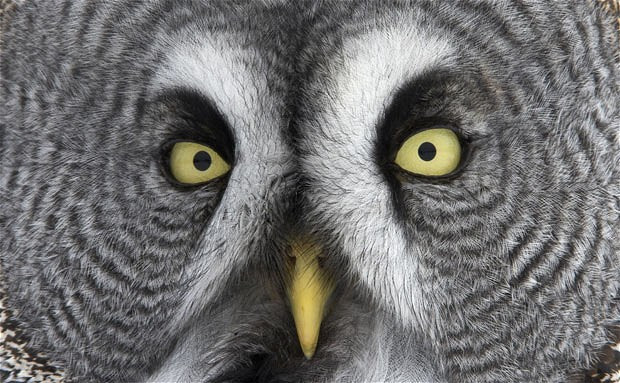

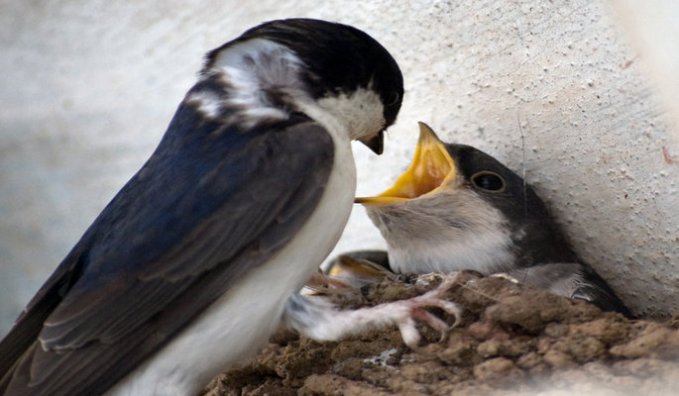
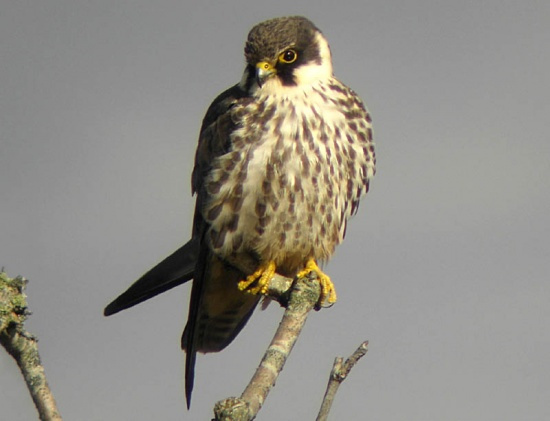

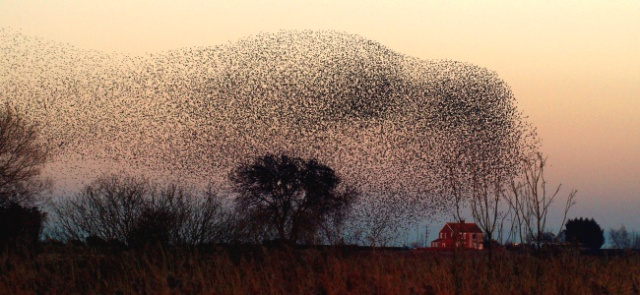

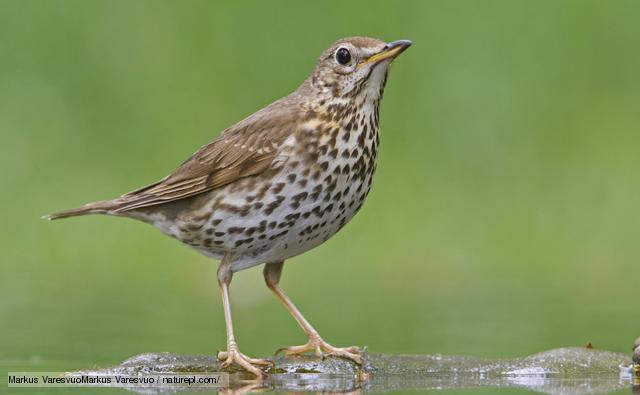


Thank you for your reply, should it merit a response we will respond in due course. This site is owned by International Animal Rescue Foundation and moderation is used.